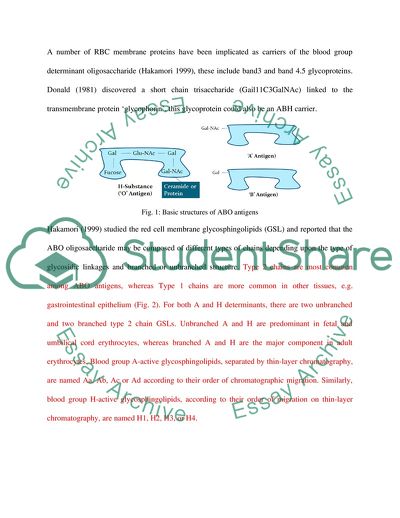Cite this document
(The ABO System of Blood Groups Term Paper Example | Topics and Well Written Essays - 2792 words, n.d.)
The ABO System of Blood Groups Term Paper Example | Topics and Well Written Essays - 2792 words. Retrieved from https://studentshare.org/health-sciences-medicine/1746072-compare-the-inheritance-of-the-abo-system-with-that-of-the-rh-system-highlighting-antigen-and-antibody-formation-and-structure-as-well-as-clinical-significance
The ABO System of Blood Groups Term Paper Example | Topics and Well Written Essays - 2792 words. Retrieved from https://studentshare.org/health-sciences-medicine/1746072-compare-the-inheritance-of-the-abo-system-with-that-of-the-rh-system-highlighting-antigen-and-antibody-formation-and-structure-as-well-as-clinical-significance
(The ABO System of Blood Groups Term Paper Example | Topics and Well Written Essays - 2792 Words)
The ABO System of Blood Groups Term Paper Example | Topics and Well Written Essays - 2792 Words. https://studentshare.org/health-sciences-medicine/1746072-compare-the-inheritance-of-the-abo-system-with-that-of-the-rh-system-highlighting-antigen-and-antibody-formation-and-structure-as-well-as-clinical-significance.
The ABO System of Blood Groups Term Paper Example | Topics and Well Written Essays - 2792 Words. https://studentshare.org/health-sciences-medicine/1746072-compare-the-inheritance-of-the-abo-system-with-that-of-the-rh-system-highlighting-antigen-and-antibody-formation-and-structure-as-well-as-clinical-significance.
“The ABO System of Blood Groups Term Paper Example | Topics and Well Written Essays - 2792 Words”, n.d. https://studentshare.org/health-sciences-medicine/1746072-compare-the-inheritance-of-the-abo-system-with-that-of-the-rh-system-highlighting-antigen-and-antibody-formation-and-structure-as-well-as-clinical-significance.


